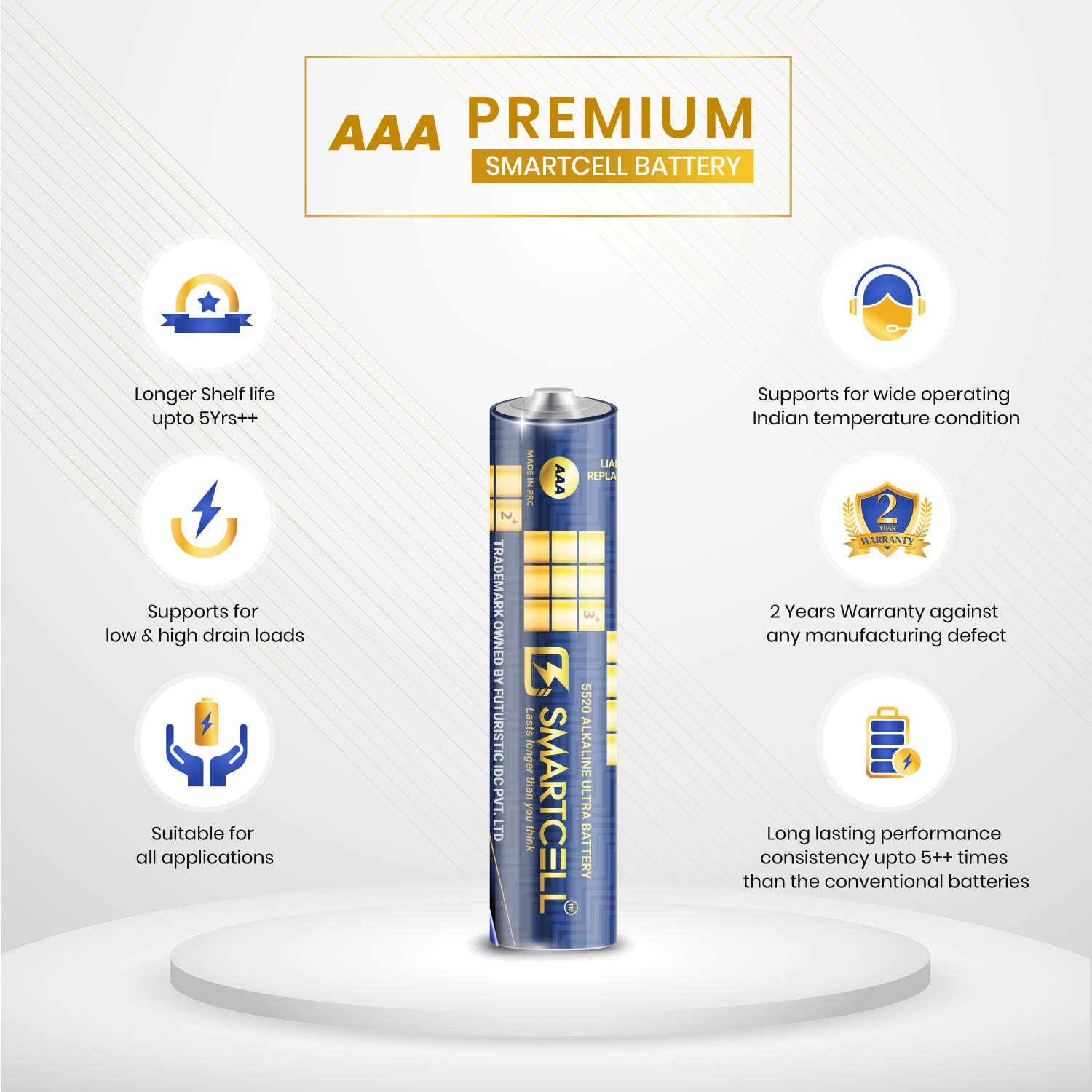
There is a golden rule in shopping- pay less and get more, but what if products are fully cost-effective i.e. whatever you pay gives you a higher return. There are a couple of things to consider when you’re buying AAA or AA alkaline batteries. From features to ROI, you have to check before getting them in your cart. It’s obvious to get the full value of money for purchasing any product. So, sharing 5 critical points of information with you to reach out to the best alkaline batteries in the market or online.
Now, do you want high-performing AA batteries? Several brands promise high-quality batteries and ensure users find a long-lasting performance. Whether you’re buying them for your clock or to run a toy, you want success, isn’t it? Whatever you pay, it’s worth knowing about the extra features you’re countering with. Down the blog, you’ll find helpful resources for alkaline batteries to help you make an effective purchase.
A few most asked questions about Alkaline batteries:
How long AA alkaline batteries last?
Batteries are an integral part of the electronic world and contribute to a greater extent to its success. AA alkaline batteries are used for several devices, for instance- digital cameras, toys, chargers, and more. When the longevity of these batteries is compared to the Minimum Average Duration of the 2015 IEC AA Digital camera test, these batteries last for long.
The capacity of these batteries is one of the key features that keep it different from the regular ones.
How alkaline batteries differ from regular ones?
If you’ve read cell biology, you must aware that our cells need a powerhouse to function properly, and that powerhouse is mitochondria. Similarly, for electronic items, batteries act as their powerhouse. A non-relevant battery would never be able to run your devices, so when you’re buying batteries, you must have an understanding of various types of batteries.
There are two prominent types of batteries- Alkaline & Zinc-based. So, what is the difference between alkaline batteries and regular ones?
The electrolyte composition is the key factor that differentiates alkaline batteries from zinc batteries. Alkaline batteries consist of potassium hydroxide, zinc batteries use ammonium chloride as electrolytes.
Next to this, alkaline batteries come with longer shelf life and provide higher energy density than zinc batteries. Alkaline batteries are safer to use as they have a specially designed internal coating that minimizes their contact resistance to make them more reliable.
So, AA alkaline batteries are not only way different than regular ones, like zinc batteries, but also AAA alkaline batteries. So, here a pertinent question arises, what is an AAA alkaline battery, and how does it also differ from AA ones?
What is an AAA alkaline battery?
An AAA alkaline battery is a standard dry cell battery generally used in low-drain portable electronic device controllers, like TV remote controls, digital cameras, and MP3 players.
The potential difference between AA and AAA alkaline batteries is their size. AA batteries are comparatively larger than AAA. This is imperative in context to battery-operated low-drain electronic devices as they often use only one predetermined size.
These batteries often vary based on their uses, and there are no specific standards for when to one over the second, but it’s a trend that those devices that consume more power prefer using AAA batteries.
As these batteries vary in size and use, do they differ in capacity as well? If an AA alkaline battery is available in 2500mAH, then in what capacity AAA alkaline batteries come, which leads to our next point of discussion.
What is the capacity of an AAA alkaline battery?
The capacity of a standard 1.5V AAA alkaline battery varies between 860 and 1200 mAh. It’s a single cell battery that measures 10.5 mm in diameter and 44.5 mm in length. These batteries weigh around 11.5 grams.
Capacity is one of the major reasons for the extensive use of AAA alkaline batteries. In terms of market value, their massive use has led to creating USD 7.58 billion global alkaline market size. Though the global impact of COVID-19 has caused a decline in the market and it’s staggering as of now, experts predict that the market is projected to grow from USD 7.76 billion in 2021 to USD 10.28 billion in 2028.
With such a high graph of success predicted, these alkaline batteries must have something special. Imagine your TV remote running without batteries or replaced by other resources, it could be argued that it won’t be as cheaper and useful as they are now. So, let’s discover some more special attributes of AAA alkaline batteries.
What is special about alkaline batteries?
Here are the reasons that what is special about alkaline batteries-
Technology Evaluation Alkaline versus Primary Lithium-
Alkaline battery chemistry dominates as the primary battery chemistry that contributes 65% of the elementary battery market. Composed of basic electrolytes, they have higher purity and activity in manganese dioxide that offers enhanced performance when compared with carbon-zinc batteries.
Apart from battery chemistry market contribution, secondary alkaline batteries are a niche market. So, let’s discover that scope as well.
Secondary Alkaline Batteries
Do you know alkaline batteries are rechargeable as well, yes, you heard right, these batteries are a niche market? They are widely available in diverse sizes, like C and D apart from AA and AAA. The usage of alkaline batteries is restricting ; however, one of the benefits of these batteries is that it fits for usage in all applications that require primary alkaline batteries.
These batteries are also low-cost rechargeable batteries when compared with other chemistries. These reasons surely make alkaline batteries special.
Conclusion-
Alkaline batteries of sizes AA and AAA may vary properties and prices. But there are certain specific factors that make them a separate entity with diverse values. So, whether you’re purchasing AAA or AA alkaline batteries, you must be aware of these factors to make an effective purchase.